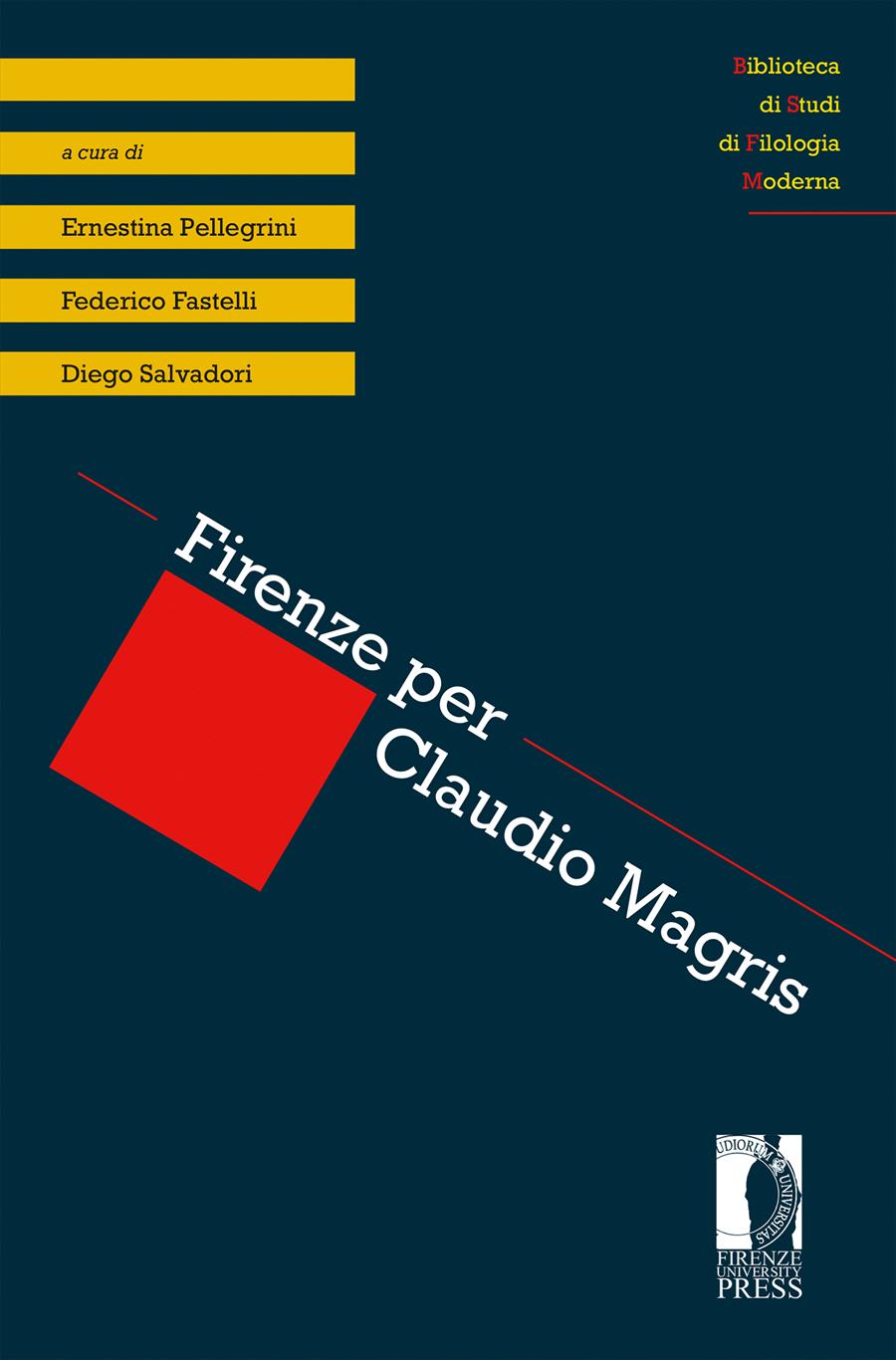- Firenze per Claudio Magris
- Edited by Ernestina Pellegrini, Federico Fastelli, Diego Salvadori
La rielaborazione dei mitemi orfici in Microcosmi. Tra vulgata classica e favola indiana
- Andrea Fallani
- © 2021 Author(s) |
- CC BY 4.0
- DOI: 10.36253/978-88-5518-338-3.27
Starting from the critics’ observations about the structure of Microcosmi, the essay focuses on the key role played by the love story between the protagonist-narrator and his wife Marisa, a sort of rewriting of Orpheus and Eurydice’s myth. Convergences and variations between the classic vulgate of the myth and the pseudo-rewriting of Microcosmi are highlighted. The essay also focuses on the Indian myth of Savitri and Sátiavan, to understand the source of the many substantial variations and, in particular, the reversal of roles between male and female characters. This myth turns out to be a privileged source for the rewritings of the Orpheus’ myth that are offered by Magris in his Microcosmi.
- Keywords:
- Claudio Magris,
- Microcosmi,
- Mythocriticism,
- Orpheus and Euridyce,
University of Florence, Italy
- Bharadvaja, Sarma, a cura di. 2008. Vyasa’s Mahabharatam in Eighteen Parvas. The Great Epic of India in Summary Translation. Kolkata: Academic Publishers.
- Ciani Maria G., e Andrea Rodighiero, a cura di. 2004. Orfeo. Variazioni sul mito. Venezia: Marsilio Editori.
- Contini, Gabriella. 1997. “Di asprezze e d’incanti. Note su Microcosmi di Claudio Magris.” Nuova Antologia 534, 2202: 314-18.
- Czorycki, Michal. 2015. “The Final Passage. Death, Transcendence and Aquatic Imagery in Claudio Magris’s Microcosmi.” Italica 92, 2: 423-40.
- Gravilović, Nataša. 2018. “La parola come costruttrice di mondi al confine degli orizzonti in Microcosmi di Claudio Magris.” Italica Belgradensia 1: 79-97.
- Hillman, James. 2014. Figure del mito, traduzione di Adriana Bottini. Milano: Adelphi. Ed. orig. 2007. Mythical Figures, Washington: Spring Publications.
- Magris, Claudio. 2012 (1993). “Il Conde.” In Claudio Magris, Opere, a cura e con un saggio introduttivo di Ernestina Pellegrini e uno scritto di Maria Fancelli, vol. I, 1485-507. Milano: Mondadori.
- Magris, Claudio. 1997. Microcosmi. Milano: Garzanti.
- Magris, Claudio. 2001. Fra il Danubio e il mare. I luoghi, le cose e le persone da cui nascono i libri. Milano: Garzanti.
- Magris, Claudio. 2005. Alla cieca. Milano: Garzanti.
- Magris, Claudio. 2006. Lei dunque capirà. Milano: Garzanti.
- Magris, Claudio. 2014 (2008). “Alcesti indiana.” In Claudio Magris, Alfabeti. Saggi di letteratura, 16-25. Milano: Garzanti, 2003.
- Magris, Claudio. 2016 (2012). Opere, a cura e con un saggio introduttivo di Ernestina Pellegrini e uno scritto di Maria Fancelli, vol. I. Milano: Mondadori.
- Magris, Claudio. 2019. Polene. Occhi del mare. Milano: La nave di Teseo.
- Matomoro, Blas. 1998. “Conversación con Claudio Magris.” Cuadernos Hispanoamericanos 582: 69-76.
- Montale, Eugenio. 1984 (1956). “La frangia dei capelli che ti vela.” In Eugenio Montale. La bufera e altro. In Tutte le poesie, a cura di Giuseppe Zampa, 215. Milano: Mondadori.
- Ovidio Nasone Publio. 2010 (1994). Le metamorfosi, traduzione di Giovanna Faranda Villa, vol. I, 15 voll. Milano: Rizzoli.
- Paccagnini, Ermanno. 1997. “Anche i Microcosmi vivono in equilibrio.” Il Sole 24 Ore 16 marzo, 1997.
- Paccagnini, Ermanno. 2006 (1997). “Storie, confini e sconfinamenti. Prefazione.” In Claudio Magris, Microcosmi, ix-xxiv. Torino: UTET.
- Parmegiani, Sandra. 2011. “The Presence of Myth in Claudio Magris’s Postmillennial Narrative.” Quaderni d’Italianistica 32, 1: 111-34.
- Pellegrini, Ernestina. 2003 (1997). Epica sull’acqua. L’opera letteraria di Claudio Magris. Bergamo: Moretti & Vitali.
- Rilke, Rainer M. 2006. I sonetti a Orfeo, traduzione di Sabrina Mori Carmignani. Firenze: Passigli Editori. Ed. orig. 1923. Die Sonette an Orpheus. Leipzig: Insel Verlag.
- Rolland, Romain. 2015. Beethoven, traduzione di Fernando Biagini. Roma: Castelvecchi. Ed. orig. 1903. “Vie de Beethoven.” Cahiers de la Quinzaine 12.
- Spitzer, Leo. 2009 (1967). L’armonia del mondo. Storia semantica di un’idea, traduzione di Valentina Poggi. Bologna: Il Mulino. Ed. orig. 1963. Classical and Christian Ideas of World Harmony. Prolegomena to an Interpretation of the Word ‘Stimmung’. Baltimore: Johns Hopkins Press.
Chapter Information
Chapter Title
La rielaborazione dei mitemi orfici in Microcosmi. Tra vulgata classica e favola indiana
Authors
Andrea Fallani
Language
Italian
DOI
10.36253/978-88-5518-338-3.27
Peer Reviewed
Publication Year
2021
Copyright Information
© 2021 Author(s)
Content License
Metadata License
Bibliographic Information
Book Title
Firenze per Claudio Magris
Editors
Ernestina Pellegrini, Federico Fastelli, Diego Salvadori
Peer Reviewed
Publication Year
2021
Copyright Information
© 2021 Author(s)
Content License
Metadata License
Publisher Name
Firenze University Press
DOI
10.36253/978-88-5518-338-3
eISBN (pdf)
978-88-5518-338-3
eISBN (xml)
978-88-5518-339-0
Series Title
Biblioteca di Studi di Filologia Moderna
Series E-ISSN
2420-8361
